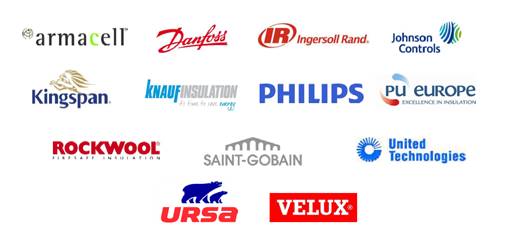
National Building Renovation Strategies A ‘tick-the-box’ exercise on paper will not deliver jobs and growth!
Date
Sections
In March 2016, the Joint Research Centre of the European Commission published its analysis of the national long-term building renovation strategies, drawn by the Member States in accordance with the Article 4 of the Energy Efficiency Directive. Even though the report points out at important gaps in the strategies, a too generous rating scale has been adopted, leaving the wrong impression that Member States are on track to deliver. EuroACE calls for a more realistic and in-depth assessment of the national strategies in order to improve them, not only on paper, but also their implementation on the ground. This is the only way to deliver jobs and growth to the European consumers.
According to Article 4 of the Energy Efficiency Directive (EED), Member States were required to draw national long-term renovation strategies for the residential and commercial buildings, both public and private, by April 2014. This provision is an essential tool to achieve the EU’s long-term goal, not only in terms of CO2 emissions reduction, but also in terms of creating more jobs and growth. As a matter of fact, buildings represent 40% of the EU energy consumption, 36% of its CO2 emissions, and building renovation is an economic activity entailing a huge potential in terms of job creation and growth – up to 2 million jobs could be created up to 2020! In order to deliver all these benefits, the best approach is to adopt a long-term perspective, and in this regard, the national renovation roadmaps are a key starting point.
EuroACE acknowledges the assessment work done by the JRC on the transposition of Article 4 of the EED, but regrets that a too loose rating scale has been adopted when looking at the national renovation strategies. In fact, a majority of Member States has been given the ‘pass mark’, and would have a ‘fully’ or ‘almost fully’ compliant strategy. But renovation strategies should not remain ‘tick the box exercises’. “What matters most is that strategies help closing the gap between the huge savings and comfort potential in our buildings, and the reality of low energy renovation rates. Their role should be transformational”, said Céline Carré, Vice-President of EuroACE.
To grasp the huge potential currently being left untapped, the long-term building renovation strategies should be improved. The JRC Report, in its conclusions, points out at essential gaps, such as the lack of a forward-looking perspective to guide investments, or the absence of clear indications or targets for energy renovations in buildings. To go further and effectively deliver the benefits attached to building renovation, EuroACE calls on the European Commission to seize the opportunity of the current policy reviews in the energy efficiency field, to improve the strategies, as Member States are expected to deliver the second version by April 2017, in just a year’s time.
Most importantly, a thorough implementation plan should be attached to the renovation strategies, as strategic planning is a first step, but is not sufficient alone to deliver. “Stakeholder involvement and partnership with the financial sector is also key to improve the national building renovation strategies, as a shared goal is needed in the EU to lead the transformation of the building stock towards nZEB level”, explained Adrian Joyce, Secretary General of EuroACE.
The national building renovation strategies should be seen as much more than a ‘tick-the-box’ exercise. They are a wonderful investment opportunity, leading to renewed homes, improved well-being, and more quality jobs – especially in SMEs. The JRC Analysis is available here.
END
For further information
Adrian JOYCE
EuroACE Secretary General
+32 (0) 2 639 10 10
About EuroACE
EuroACE represents Europe’s leading companies involved with the manufacture, distribution and installation of energy saving goods and services for buildings. EuroACE members employ over 300 000 people in these activities in Europe, and have around 865 production facilities and office locations. The mission of EuroACE is to work together with the EU institutions to help Europe move towards a more efficient use of energy in buildings, thereby contributing to Europe’s commitments on climate change, energy security and economic growth.
EuroACE Members (March 2016) are

